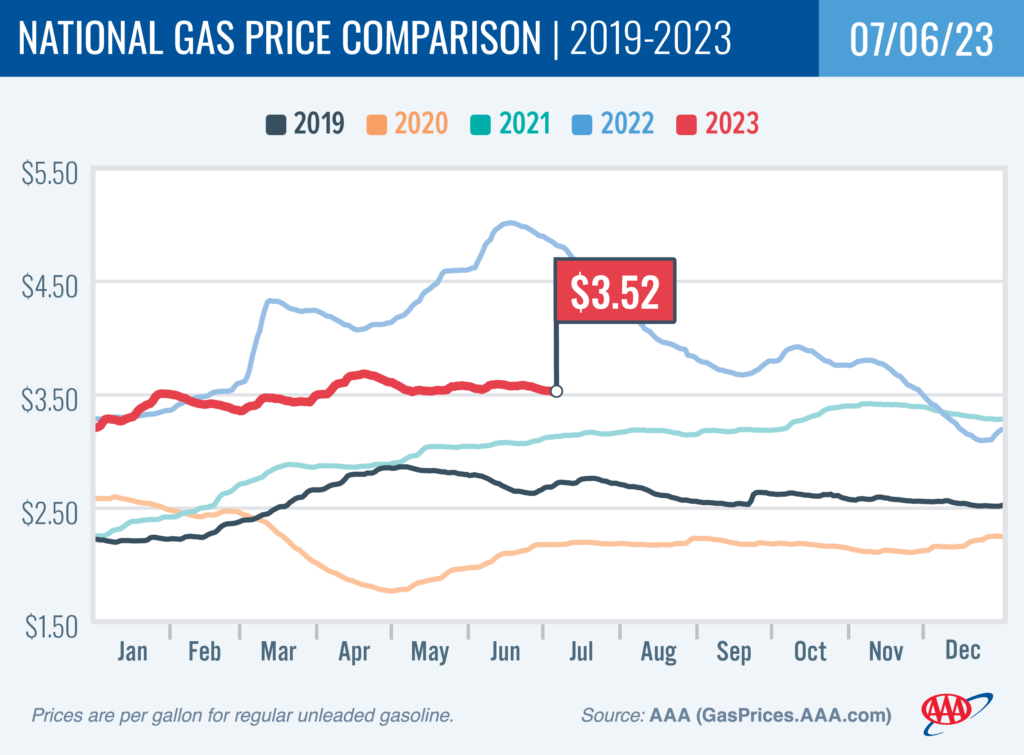AAA Report: Gas Prices Wobble, But They Don’t Fall Down

“Gas prices may rise over the next few days based on slightly higher demand,” said Andrew Gross, AAA spokesperson. “But it could be more of a blip than a trend, and demand may retreat once the holiday is further in the rearview mirror.”
According to new data from the Energy Information Administration (EIA), gas demand increased slightly from 9.31 to 9.6 million b/d last week. Meanwhile, total domestic gasoline stocks decreased by 2.5 million bbl to 219.5 million bbl. Rising gas demand amid decreasing supply will likely push pump prices higher.
Today’s national average (July 7) of $3.52/gallon is two cents less than a month ago and $1.25 less than a year ago.
Quick Stats
Since last Thursday, these 10 states have seen the largest changes in their averages: Colorado (+11 cents), Arizona (−11 cents), Ohio (−10 cents), Indiana (−9 cents), Utah (−8 cents), Illinois (−7 cents), Pennsylvania (−7 cents), Florida (−6 cents), South Carolina (−6 cents) and Texas (−6 cents).
The nation’s top 10 least-expensive markets: Mississippi ($2.96), Alabama ($3.07), Louisiana ($3.08), Tennessee ($3.08), Arkansas ($3.10), Texas ($3.13), South Carolina ($3.14), Oklahoma ($3.18), North Carolina ($3.21) and Georgia ($3.22).
Oil Market Dynamics
At the close of Wednesday’s formal trading session, the benchmark West Texas Intermediate (WTI) increased by $2 to settle at $71.79. Oil prices have increased this week due to market concerns that supply may be tight through the remainder of 2023. However, price increases have been capped due to ongoing market fears that a recession will occur. If a recession occurs, oil demand and prices will likely decline. Additionally, the EIA reported that total domestic commercial crude inventories decreased by 1.5 million bbl to 452.2 million bbl.
Drivers can find current gas prices along their route using the AAA TripTik Travel planner.
Source: https://rvbusiness.com/aaa-report-gas-prices-wobble-but-they-dont-fall-down/






